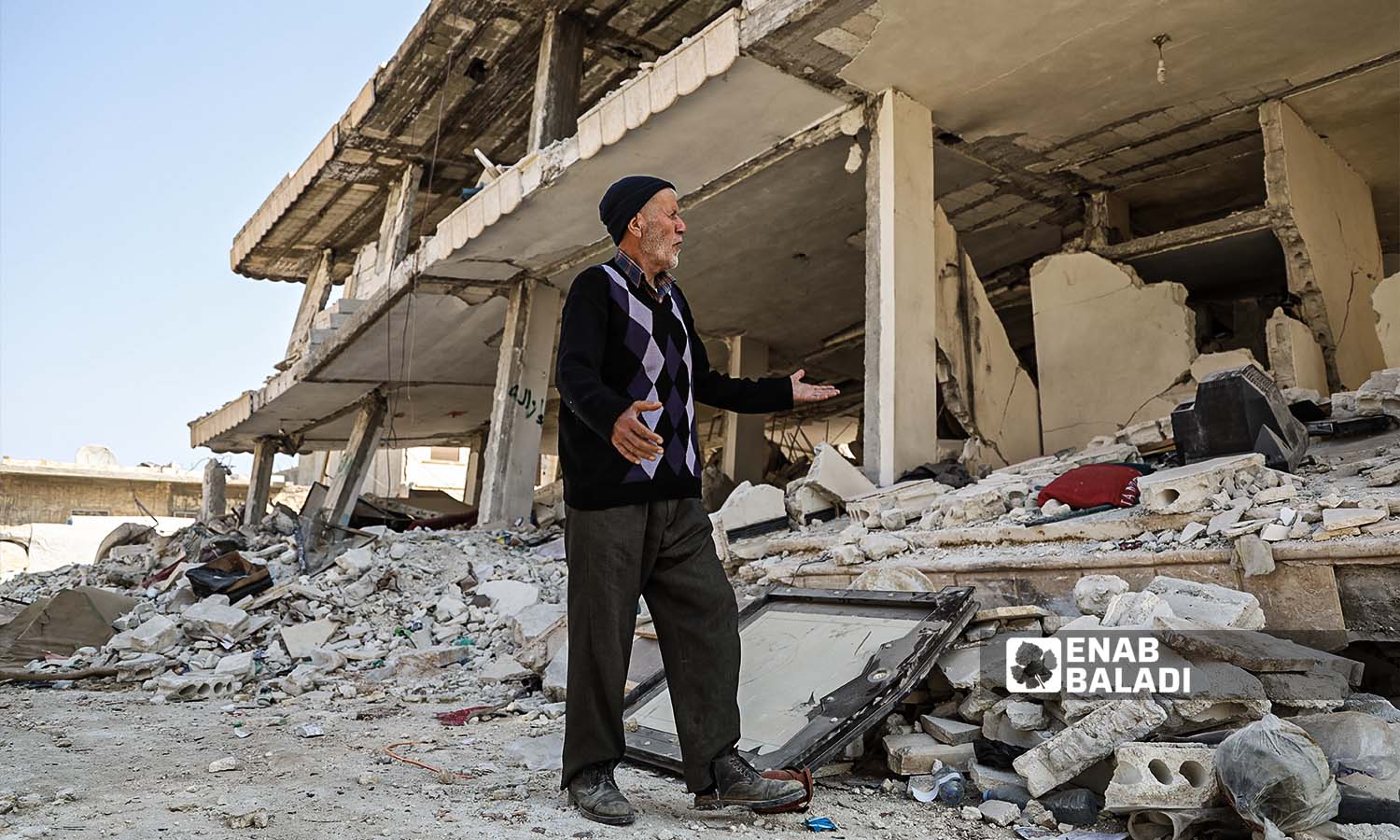



Aleppo countryside – Dayan Junpaz
“We slept on the roads with the rain and the bitter cold. We woke up running barefoot. We had nowhere to go,” the 46-year-old Ghazi al-Hamad describes the moment he left his house with his family of five in the northern Jindires town following the devastating earthquake that killed dozens of his relatives under the rubble of their homes on February 6.
Al-Hamad told Enab Baladi that he did not have a car to sleep in, like many families who took their cars as temporary shelters, forcing him to stay in the severe rain and cold that night.
The man, who owns two apartments in Jindires town in the countryside of Afrin, was surprised by the complete destruction of his second house, while the house in which he lived was cracked, making it uninhabitable, so he was forced to live in tents until the completion of its restoration.
The earthquake that struck northwestern Syria caused great material damage in the region, as many buildings collapsed completely or partially and caused many cracks in the walls and columns on which the buildings rest.
With repeated aftershocks, the owners of the cracked homes were forced to take refuge in shelters and tents.
Despite the absence of accurate statistics on the number of camps established in response to the earthquake, the Gloca organization counted the existence of 78 camps, most of which are in remote areas or those affected by the earthquake.
Before the disaster, the organizations were unable to meet the needs of the camp residents, but today they are even more helpless in the face of a disaster-stricken area.
The situation of most of the owners of houses damaged in northern Syria as a result of the earthquake is similar, in terms of the lack of financial capacity for restoration or the existence of alternative housing options away from tents or temporary shelters, with no imminent solutions on the horizon.
Mahmoud Haffar, head of the town’s local council, told Enab Baladi that the number of damaged buildings as a result of the earthquake in the region amounted to more than 1000 uninhabitable buildings, adding that more than 270 buildings have completely collapsed.
Haffar explained that the earthquake affected 7,000 families, 4,000 of whom were directly affected, while the remaining families resorted to shelters because their homes were no longer livable.
He added that the town needs to rehabilitate the infrastructure, including the sewage system and the water network, pointing out that seven stations were completely damaged, and the rehabilitation work is currently underway for two water tanks to support and reactivate them.
The head of the Free Syrian Engineers Association in Azaz, Bassem Nanaa, told Enab Baladi that hours after the disaster occurred, the Engineers Association formed 22 engineering committees to assess and detect the buildings damaged by the earthquake, in coordination with councils and some local organizations for emergency response.
Nanaa added that each committee is chaired by three engineers (consultant, civil, and structural), in addition to the two “public safety” committees, each of which includes five consulting engineers.
These committees work within a well-studied engineering plan according to three classifications for each damaged house: the house is intact, i.e., suitable for habitation, or moderately damaged, and therefore evacuated until restoration or severely damaged.
Then, the “public safety” committee will re-evaluate the assessment to submit a final report on the technical condition of the building and then make the decision to repair or demolish it.
The specialized committees are conducting a comprehensive survey of the buildings of Azaz, Suran, Marea, Akhtarin, Afrin, and Jindires, according to the engineer.
The local rescue agency, Syria Civil Defense (SCD), also known as The White Helmets, estimated the number of families that were displaced as a result of the earthquake at about 40,000 families, while the number of completely destroyed buildings reached about 550 buildings, and more than 1570 buildings were partially damaged, in addition to hundreds of cracked buildings.
if you think the article contain wrong information or you have additional details Send Correction